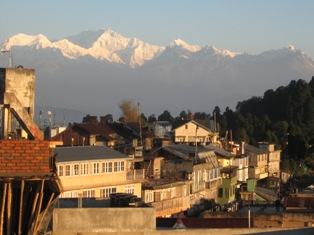
Darjeelingites are not Indians
India is less of a nation and more of a multi-lateral conglomeration. If you travel a half an hour, you feel as if you've entered a new world. The culture, the traditions, the food, the customs and behavior, and even the language changes a bit. There are, of course, a few constants, like the indecipherable side-head bob, the frustrating inefficiency and mouth burning cuisine.
I have found, however, that the Himalayan regions are very different from their counterparts in the plains. And apparently, the resent being part of Mother India. I had several lengthy conversations with two trekking guides and a few other locals, many of whom are of Nepali descent, about how much they resent being a part of India, don't consider themselves Indian (even though they were born and raised in the country) and don't even like Indians. Darjeeling used to be part of Sikkim, which used to be a small, independent nation, but has since been swallowed up by India. The cultures in Sikkim, Bhutan and Nepal have many more similarities to eachother than they do to greater India, and Darjeeling is a mix of all of these. Darjeeling is now part of West Bengal, although you notice a very thick line of demarcation as you leave the steamy and crowded plains of West Bengal and wind up the steep mountain road with cool breezes to the hill station. Many Darjeelingites try to avoid speaking Hindi at all costs, although they eagerly take in Hindi movies and music.
As a foreign traveler, I notice an immediate difference in the mountain regions. I feel more relaxed. I feel much more comfortable being on my own, especially after dark. No one questions my marital status. Their attitudes toward women are much more equitable and respectful. No one stares. In most of India, there is no taboo against staring. I've been on seven hour bus rides where I don't think the men blinked or turned away from me the entire time.
The trekking guides told me they only take foreigners and will not take Indians on trips, although they also said that it's usually not an issue. Indian tourists don't like walking. They like to squash ten people over capacity like sardines into a jeep to get anywhere. During my trek up to Sandakphu, the guide took me on a lot of tough short cuts and meandering trails in the backwoods to avoid walking on the road that the West Bengal government created that runs all the way to Sandakphu. While trekkers may resent seeing cars drive by during their nature adventure, it does make life easier for the villagers along the way. They have a steady stream of supplies this way. Personally, after seeing the signs along the road about the blood bank, I would rather walk than drive up that road.

0 Comments:
Post a Comment
<< Home